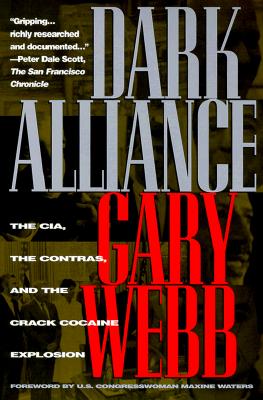RE: Mexico Drug Plane Used For CIA "Rendition" Flights
From: SafetyJoe [Ron Paul 2008]
Date: 07 Sep 2008, 00:02
Mexico Drug Plane Used For CIA 'Rendition' Flights
----------------- Bulletin Message -----------------
From: Eddie NWO Censored
Date: 06 Sep 2008, 20:44
Eddie NWO Censored

Mexican soldiers guarding a cocaine seizure allegedly belonging to fugitive Mexican drug-trafficker Joaquin 'Chapo' Guzman-- after the airplane "Gulfstream II" from Colombia crashed in Merida jungle in Yucatan State, southern Mexico, in 2007
************************************************************
Mexico drug plane used for US 'rendition' flights: report
************************************************************
AFP France
Sep 4, 2008
http://news. yahoo. com/s/afp/20080904/wl_afp/mexicouscrimedrugs
MEXICO CITY (AFP) - A private jet that crash-landed almost one year ago in eastern Mexico carrying 33 tons of cocaine had previously been used for CIA "rendition" flights, a newspaper report said here Thursday, citing documents from the United States and the European Parliament
The plane was carrying Colombian drugs for the fugitive leader of Mexico's Sinaloa cartel, Joaquin "Chapo" Guzman, when it crash-landed in the Yucatan peninsula on September 24, El Universal reported
The daily said it had obtained documents from the United States and the European Parliament which "show that that plane flew several times to Guantanamo, Cuba, presumably to transfer terrorism suspects"
It said the European Parliament was investigating the private Grumman Gulfstream II, registered by the European Organization for the Safety of Air Navigation, for suspected use in CIA "rendition" flights in which prisoners are covertly transferred to a third country or US-run detention centers
It also said the US Federal Aviation Administration's (FAA) logbook registered that the plane had traveled between US territory and the US military base in Guantanamo
It said the FAA registered its last owner as Clyde O'Connor in Pompano Beach, Florida
Extraordinary rendition has been harshly criticized since it began in the aftermath of the September 11, 2001 attacks in the United States
..gary webb - articles - Upload a Document to Scribd.... Read this document on Scribd: gary webb - articles ..
Dark Alliance - Crack & The CIA - 1of5
2 of 5
3 of 5
4 of 5
5 of 5
Gary Webb on CIA Trafficking of Cocaine - Gary Webb is the San Jose Mercury News journalist that was run out of his job and blacklisted from the industry for daring to report what he found out
Robert Parry (Consortiumnews. com) and Gary Webb (Dark Alliance) address a crowd at the Midnight Special Bookstore in Santa Monica, CA, December 3, 1996
http://consortiumnews. com
http://www. narconews. com/darkalliance/drugs/start. htm http://911blogger. com Order DVD from: justicevision. org
********************************************************************************
Gary Webb (August 31, 1955 – December 10, 2004) was a prize-winning American investigative journalist
********************************************************************************
Webb was best known for his 1996 "Dark Alliance" series of articles written for the San Jose Mercury News and later published as a book, In the three-part series, Webb investigated Nicaraguans linked to the CIA-backed Contras who had allegedly smuggled cocaine into the US which was then distributed as crack cocaine into Los Angeles and funneled profits to the Contras, Webb also alleged that this influx of Nicaraguan supplied cocaine sparked and significantly fueled the widespread crack epidemic that swept through urban areas According to Webb, the CIA was aware of the cocaine transactions and the large shipments of drugs into the US by the Contra personnel and directly aided drug dealers to raise money for the Contras
Webb's reporting generated a large controversy and the Mercury News backed away from the story, effectively ending Webb's career as a mainstream media journalist In 2004, Webb was found dead from two gunshot wounds to the head, which the coroner's office judged a suicide
Two gunshots to the head, a suicide
Ex-DEA Head Admits CIA Imported Cocaine - A clip from Kevin Booth's "American Drug War: The Last White Hope"
http://www. AmericanDrugWar. com
..
CONTRA COCAINE NBC news report about drugs and the CIA - Whistle blower Mike Ruppert blew the cover
by Top-Notch112..
CIA TORTURE jet crashed with 4 tons of cocaine - A Gulfstream II jet that crash landed in Mexico's Yucatan Peninsula in late September 2007 - bearing a load of nearly four tons of cocaine. This particular Gulfstream II (tail number N987SA), was used between 2003 and 2005 by the CIA for at least three trips between the U.S.. east coast and Guantanamo Bay — home to the infamous "terrorist" prison camp — according to a number of press reports
Pulitzer Prize winning journalist Gary Webb uncovered that the CIA was responsible for distributing cocaine into poor Los Angeles neighborhoods.. Shortly after Webb exposed the CIA, he was killed (the official story is that he committed suicide by shooting himself twice in the head)
War is profitable, and the so-called "War on Drugs" is no different. Government agencies make money in every part of the process: from sale, to seizure, to incarceration.. America has 25% of the world's incarcerated population, and a higher percentage of its black population in prison than South Africa did at the height of apartheid
Gary Webb's book, Dark Alliance, did make the connection between the Reagan administrations support for the Contras (some of which were involved in drug running) and the crack explosion that was going on in L.A. at the time. A subsequent John Kerry led congressional investigation into the matter confirmed that CIA operatives knew that some Contras were involved in drug running and they looked the other way (or in some cases helped get them out of trouble) because they thought their anti-communist crusade was more important. That is quite different from saying that the CIA was distributing cocaine in Los Angeles - not even Gary Webb said that.. The other commenter who pointed out Gary Webb's fall, family problems and depression was right If you want a critical, but real journalistic take on what is going on with this story (as well as a touching tribute to Gary by one of the people who worked with him), you should head over to http://www. narconews. com/ They are all over this story. And no I don't work for Narconews.. I studied human rights violations related to the drug war in Latin America and am very familiar with Gary Webb and all the other people who work on this issue
Why oh why doesn't the CIA get more heat for their central role in the corruption scandal(s) that support America's imperialistic foreign, as well as domestic, policies?
Is it because of their nice title: Central "Intelligence" Agency? What if we called them what they really are: Central Eavesdropping, Torturing, Drug-running, Gun-smuggling Agency?
Maybe then people would be able to recognize their crimes and demand they be held accountable
==========================

























